The legal profession’s belief in access to justice for all is undimmed. But faced with an ageing cadre of practitioners and swingeing public funding cuts, that commitment must be combined with creativity. Eduardo Reyes reports from the latest Gazette roundtable.
In Dr Seuss’s book The Cat in the Hat Comes Back, there is a moment when the cat’s hapless attempt to fix a problem results in the landscape being entirely covered in large pink spots. The horrified protagonist turns to the cat and asks: ‘Now what, Cat? NOW what?’
This is essentially the question the Gazette put to those attending its roundtable on access to justice – and with the same degree of incredulous alarm.
Huge numbers of potential civil legal aid cases have been taken out of scope, with only the Green party contesting last week’s general election committed to restoring the status quo ante. This follows decades of deteriorating margins on publicly funded work which had already filleted a sector that is now facing a demographic timebomb. The average age profile of lawyers working in this field will soon hit retirement age – or even older.
If fairness and access to justice are in the legal profession’s ‘DNA’, ‘Now what?’ is a question posed with increasing urgency.
‘The difficulty is that there’s no political will to put the money back into the budget,’ Law Society president Andrew Caplen reflects. ‘The most I think we can realistically hope for is that some of the more discrete areas where problems have arisen can be addressed properly.’ He continues: ‘Exceptional funding and the small number of cases being granted is close to a scandal. Those rules must be relaxed to make it easier for people to access that type of funding.’
Caplen also senses that movement will be possible elsewhere: ‘The government has said that in [family cases involving] domestic violence, you still get legal aid. In fact, [access to justice charity] Rights of Women believes the “hoops” you have to jump through means that something like 50%-60% of people actually aren’t receiving an application.’
There is abundant evidence that the absence of political traction on access to justice issues applies to areas where the full brunt of the cuts is already being suffered. Richard Miller, the Law Society’s head of legal aid, adds: ‘We said when LASPO [Legal Aid, Sentencing and Punishment of Offenders Act] was going through that it would cause horrendous difficulties. We’re now starting to see the very difficulties that we identified actually happen.’
Miller cites disruption to the courts caused by the rising number of litigants in person. ‘Various select committees in parliament have all said there are serious problems here that need to be addressed,’ he notes.
Still – we are where we are. Roger Smith, Gazette columnist and former director of human rights organisation Justice, cautions against a ‘lament for what we have known’.
With no reversal of the cuts in prospect, he says: ‘The question is, “How do you spend £1.6bn?”’ There is little utility, he notes in saying, ‘Oh dear, it used to be £2.1bn’.
Law centres are at the sharp end of that need to acknowledge the truncated reality faced by those seeking access to justice. Julie Bishop, director of the Law Centres Federation, relates: ‘We have been hit very hard. [But] what that has done is lead to a very rich internal debate about our future direction.’
Law centres ‘now see themselves as returning to what was once their core mission, which is using their legal skills to address the underlying causes of poverty. So it’s broader than “access to justice”. It’s also what one might call social justice’.
Civil justice has, of course, suffered disproportionate cuts. Much of criminal legal aid is both demand-led and – while hardly adequate – also effectively ringfenced.
Solicitor pro bono group LawWorks’ head of casework Rachael Marsh says this has vastly increased the pressure on pro bono provision. ‘There have always been gaps and there are even more gaps now,’ she observes.
Solicitors acting pro bono are sometimes accused of taking work from specialist lawyers whose continued existence keeps expertise in key areas alive. Another accusation is that pro bono advice undermines the case for publicly funded provision.
Not so, Marsh insists – although the perception has grown stronger in some quarters since April 2014. LawWorks and other pro bono clearing houses play an important part in mapping the public’s legal needs, she insists.
Marsh adds: ‘We can start to make bigger arguments about the experiences of clients, because in the end, the only thing that really matters is that the most vulnerable people get a service.’ She wants pro bono’s contribution to be ‘sustainable’ and is ‘hugely supportive’ of campaigns seeking ‘to make sure that we keep fighting for legal aid’.
Pro bono cannot come close to meeting unmet legal need, Marsh says, and ‘the corporate pro bono lawyers that LawWorks works with are very, very aware of not wanting to tread on the toes of legal aid’.
Pro bono advice can at least make what is available go further. The public funding squeeze has led to ‘conversations happening that should have been happening before, but weren’t’. She notes: ‘That is bringing the relationship between the pro bono sector and the legal aid and charity advice sectors much, much closer. They’re working in a much more sophisticated and mutually supportive way.’
At the table
Julie Bishop, Law Centres Network; Richard Miller, Head of legal aid, The Law Society; Roger Smith, Visiting professor, London South Bank University; Sophie Walker, Director, Centre for Criminal Appeals; Rachael Marsh, Head of casework, LawWorks; Andrew Caplen, President, the Law Society; Jo Shaw, 1 Essex Court, justice campaigner; Chris Owen, Head of dispute resolution, TLT; Eduardo Reyes, Law Society Gazette
Computing the answers
Our discussion turns to the use of technology – both to provide legal information to the public, and to create processes that are simpler and lower-cost. Smith comments: ‘There are all these things coming down the river – and they’re all terrible. IT is one that’s coming back up.’
Smith lists some of the uses of technology that are emerging. They include ‘unbundling’ advice, where clients are able to reduce the amount of fee-paying work needed from a legal adviser by completing some of the work themselves. This can extend to the delivery of advice and in some contexts an ‘online determination’. He adds: ‘You can see broad and varied web programs aimed at giving skills and information to people going through legal processes.’
Smith’s observations are also relevant in the constitutional context of universal access: ‘I’m keen on encouraging web-based advice and information packages, because I see that as a way of keeping alive the notion that the government has a responsibility to provide the citizen with the information that they require.’
But what information? Quality can vary. Smith cites the example of employment disputes. Whereas the gov.uk portal is poor for accessing legal information, the Acas website sets a very high standard. But he is optimistic about the possibility of ‘a commitment to a nationwide information system, with the internet as a really important baseline’.
Technology is no panacea, however. Miller interjects: ‘You can create the perfect advice package: it’s fully up to date, it’s well researched, it gives you all of the information you need and it provides all the practical guidance you can possibly want.’
But he adds: ‘I have a fundamental problem with the idea of web-based solutions.’
How does a member of the public looking for advice know it is the right jurisdiction? How do they know the information is up to date? How do they know it is accurate? How do they know for sure it is what they are actually looking for?
In summary, Miller declares, self-diagnosis with a web-based tool, even where accurate, is no substitute for specialist legal advice.
Marsh substantiates this assertion: ‘LawWorks’ experience of trying to provide legal advice online is that, if you’re technologically and educationally savvy enough to be able to access it, you can probably find the information you want. But if you’re not, it is not going to work.’
For the most ‘vulnerable’ clients, she adds, by the time they realise they have a ‘legal’ problem, their situation is ‘very [far] down the line’.
What about embedding technology in the management of the dispute? The example of eBay’s online dispute resolution service is often cited – that is a success, roundtable attendees acknowledge. But because it relies on transparent transactions involving a ‘big brand’, and involves individuals who are sensitive to their public reputation as ‘traders’, it can only be replicated in a limited number of contexts. It is a ‘version of the future’ but not what is needed across the system, Smith notes.
TLT partner Chris Owen looks to his own experience of online mediations in another access to justice context. A conventional commercial mediation, he notes, will take a full day and cost £5,000 for the mediator plus the costs of the lawyers. He explains: ‘[Online mediations] are usually limited to two hours and I, as a mediator, will read and ask as many questions of the parties as possible beforehand. It’s not geographically restricted at all. It is time-limited because two hours is probably enough for people to think, ‘yes, I will give it a go’. They can do it in the comfort of their own home.’
The technology is ‘not that difficult’, Owen notes, and ‘people get comfortable with it very quickly’.
He adds: ‘My experience is you might not get [to a full solution] in the two hours, but you can make amazing progress. You have a pathway to a solution, and at least an agreement from both parties as to what they do next.’
‘Is online dispute resolution, in all its various forms, coming?’ asks Smith. He answers his own question: ‘Yes, but considerably more slowly than Richard Susskind (see box, p17) thinks.’
Hard obstacles
A willingness on the part of the legal profession to look at new solutions is evident. But lawyers are inhibited by obstacles that only the court system and policymakers are in a position to change.
Criminal legal aid – simultaneously ringfenced and open-ended – is only one challenge to widening access to civil justice. Referencing points made about the provision of legal information online, Marsh notes: ‘The other thing that technological systems highlight is that the law is too complicated. There is a role for lawyers to look at the law itself and understand how we can make it more accessible.’
If the system expects that a litigant in person can appear at a welfare tribunal, then law reform has to make that possible. She adds: ‘There’s a powerful role for lawyers to look at how the law functions and how it’s written. It’s ours, as citizens. It doesn’t belong to lawyers.’
Justice campaigner Jo Shaw, barrister at 1 Essex Court, adds: ‘There’s another argument, isn’t there? Which is to say that if the prosecutions were happening in an efficient manner, if you didn’t have adjournments because, for example, the CPS don’t do their job properly or carry out disclosure adequately, then you wouldn’t have the additional costs involved.’
She notes that the impact of litigants in person is not limited to civil cases, but is also causing delays and increasing costs in criminal cases. A related point is the impact on the judiciary. Shaw cites University College London research saying that ‘lots of [judges] are thinking about retiring because the system is creaking and they can’t cope. If we don’t have judges, we don’t have a judicial system. So I think there are cost implications beyond the narrow focus of this issue’.
A further challenge, Bishop notes, has been government policy aims that go beyond the austerity imperative – a point that is not fully admitted: ‘I think where we’ve gone wrong, throughout the whole campaign in relation to the cuts, [was] to see it as a cuts agenda. We accepted the government’s rhetoric that this is about austerity.’
Bishop cites statements by coalition minister Nick Hurd who, she says, ‘was very clear in the early days of the cuts, [asking] why would the government pay for legal aid in immigration when their policy is, in fact, to restrict immigration?’ Similarly, Hurd queried why the government would pay for legal aid in welfare benefits when, of course, the policy is to reform them.
Curbing judicial review is another example of a deliberate attempt to restrict access to justice. ‘It’s not simply about cuts,’ Bishop insists. ‘That’s one of the reasons why I think we’ve failed to get any real traction – because we’re talking about money. We’re not talking about the political agenda.’
Owen, meanwhile, outlines how the introduction of court fees will inhibit the use of alternative dispute resolution mechanisms such as mediation.
He explains: ‘As a mediator I’m acutely aware of cases that under-settle, because the parties have to settle – or one party has to.’
He explains: ‘The bargaining power simply isn’t there to take it any further – whereas mediation may be more effective for them post-disclosure. But to get to disclosure, you’ve got to issue.’
Court fees, he notes, have made the step of issuing uneconomic for many small and medium-sized enterprises in all but ‘bet the farm’ disputes.
Third-party funding (TPF) has helped to oil the wheels in some commercial disputes. The minimum figure for a funded dispute has come down from the traditional £3m threshold, Owen notes. But TPF remains a funding method hard to make work in many cases: ‘It is quite difficult to get everybody’s interests aligned, and that’s the headache with third-party funding.’
In a very different context, funding is also core to Sophie Walker’s current plans. She is director of the Centre for Criminal Appeals, a ‘not-for-profit solution’ to the shortage of investigation and legal representation on appeal.
The organisation is in the process of applying for a licence to set up as a ‘charity law firm’. The CCA seeks funding for cases, as well as using legal aid where available. ‘Against all odds we’re actually doing really well,’ she says.
‘My legal background is in the US,’ Walker adds. ‘I went to university here, but my first practice was in Alabama, in a small death penalty office that was supported almost entirely by the third sector.’
Her experience is that ‘you can run very effective charity law firms, which are partly funded through legal aid and partly through trusts and foundations’.
She adds: ‘Legal aid will only pay for so much and if we accept that’s [how] it’s going to be for [at least] the next five years – where else can we get that money from?’
It is a model that interests Smith, who predicts that future practices will set up with a very different model from the traditional law firm – finding ways to operate from lower-cost locations and identifying different methods of making contact with clients.
The ombudsman system is also mentioned. Using an ombudsman in disputes has proved a popular alternative to the courts in some sectors, notably financial services, Bishop notes.
But rising expectations of what an ombudsman can deal with prompt serious reservations. There needs to be a sharper definition of their purpose and remit, for a start. As Miller points out, the system originated with the parliamentary ombudsman, whose job is essentially to identify maladministration.
‘There may be scope for saying the role of the ombudsman should be extended, and should cover [more than] just maladministration,’ Miller says. But he adds: ‘We need to be careful we’re not saying, “here’s a solution”.’
Fighting on
The fact lawyers are talking about new ways to facilitate access to justice does not reduce the need for a campaigning response to inadequate provision, Caplen concludes. The profession must ‘keep the government’s feet to the fire… at each and every opportunity’. After all, ‘providing a proper justice system has to be the fundamental responsibility of government’. It is a nonsense, he suggests, to be proud of international disputes being played out in London if ordinary citizens cannot leverage similar rights.
A parallel obligation is to ‘get the public to understand that justice is as important as health and education’, he adds.
In summary, Caplen stresses that the profession’s own initiatives are ‘all partial’.
‘One of the things we’ve been pushing for in the Law Society Manifesto is to look again at the justice system in its entirety,’ he says. ‘We need to see how all these initiatives that people are suggesting can fit together so that we’ll end up with a properly functioning justice system.’
If the incoming government proves to be open to ideas for maintaining and expanding access to justice, it will find many members of the legal profession who have moved on from – to borrow a phrase from one attendee – ‘crying into our beer’. As this discussion highlights, there are non-financial impediments that need to be removed in order to improve access to justice. However creative and committed the legal profession is, this is not something it can do alone.
POINTS OF ENTRY
Fresh thinking on access to justice:
- The Legal Education Foundation is currently conducting research on the digital delivery of legal services to low-income people. This is taking forward work undertaken with Professor Alan Paterson of Strathclyde University for the Nuffield Foundation and published in January 2014 as Face to Face Legal Services: Global lessons from the digital revolution. Roger Smith is working with LEF on this project.
- In February 2015, a Civil Justice Council report on online dispute resolution called on the government to establish a new internet-based court service to handle lower-value civil claims. The CJC report, led by legal futurologist Professor Richard Susskind, recommended that a pilot be established as a matter of urgency. Disputes to be handled by the service would be capped at £25,000.
- Human rights group Justice’s 2014 report Delivering Justice in an Age of Austerity argued for the introduction of a new primary dispute resolution officer (a ‘registrar’). They would be responsible for proactively case managing disputes, as well as resolving the majority of cases through a combination of mediation and early neutral evaluation.


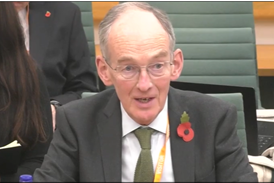
















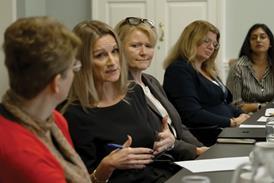



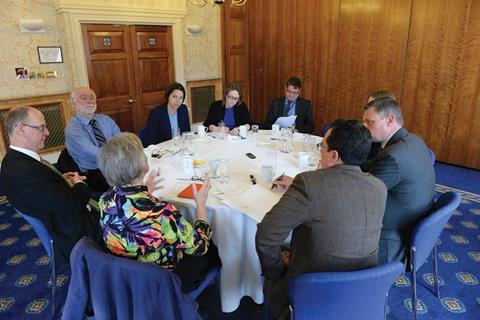
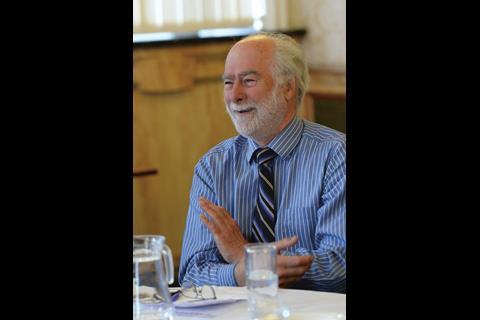

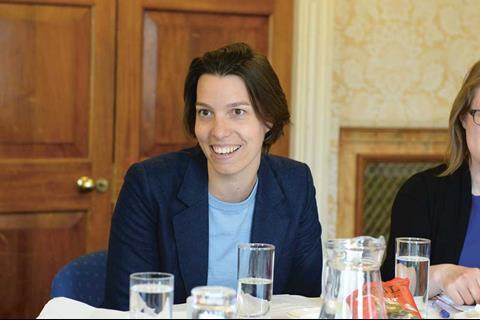
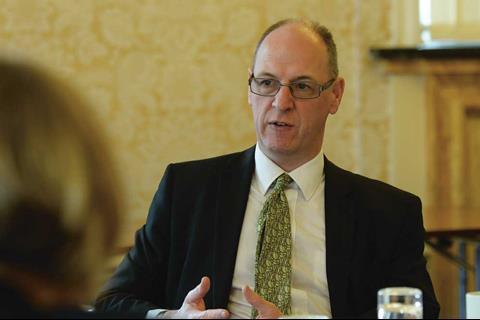
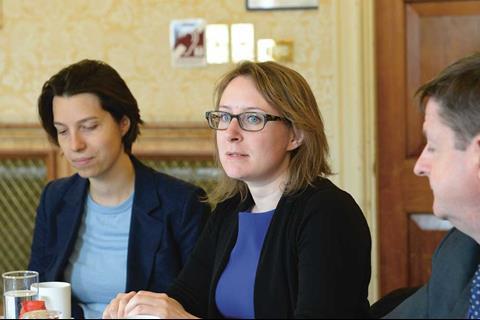










No comments yet